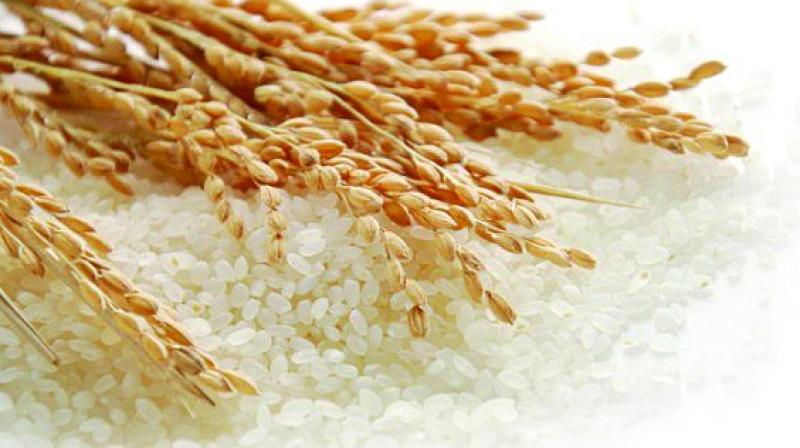Speakers, led by a senior government official in an online panel discussion on Telangana Sona Rice highlighted the health benefits of the rice and the need to tap its export potential.
Indian School of Business (ISB) organized the programme addressing the ‘Agricultural Innovations and Consumer Markets-Benefits and Challenges for Telangana Sona Rice’. Agriculture Secretary B.Janardhan Reddy said that the rice variety can become a new, healthy food preference.
Telangana Sona Rice, with a low glycemic index (GI), can contribute to building a healthier India and address lifestyle issues like diabetes. The new paddy variety with its intrinsic health benefits and enhanced production in the state, has a good potential to reach out to various consumers across the globe.
The Sona variety designated as RNR 15048 was tested and found to be having a low glycemic index (GI) (51.72±22.50), which upon regular consumption for a period of three months reduced glycosylated haemoglobin (HbA1c) levels in diabetic subjects thereby suggesting its potential in the maintenance of blood glucose.
Reddy said that the need is to catch the imagination of consumers on its health benefits and also build upon the export potential, urging ISB to work closely with all the stakeholders and take this initiative forward.
Developed by scientists of Professor Jayashankar Telangana State Agricultural University (PJTSAU), Telangana Sona (RNR-15048) superfine variety of rice has a low glycemic index and higher protein, carbohydrates, energy and vitamin B3. The State Agriculture Department, PJTSAU and ISB, signed an agreement, a few months ago on strategic branding and marketing of Telangana Sona rice.
PJTSAU Vice-Chancellor, V. Praveen Rao told the panel discussion that Telangana Sona Rice gels with local climatic conditions and is a disease-resistant, short-duration crop with high protein content and a low glycemic index. PJTSAU adopted a multi-pronged approach in terms of partnerships, innovations, research, mapping, value chain in offering more value to the stakeholders.
A study in the National Institute of Nutrition (NIN) had found out that the low-GI rice RNR 15048 can be a useful therapeutic diet that helps in the reduction of blood glucose and elevation in plasma HDL cholesterol levels in patients with type-2 diabetes. The study had also stated that the GI value and the digestibility of foods are known to depend on various factors such as the presence of high dietary fibre, processing techniques, physicochemical and cooking properties such as alkali spreading value and gel consistency, nutritional factors, cooking time, the presence of macronutrients, and the ratio of amylose and amylopectin. Hence, some of these factors may be responsible for the low GI of RNR15048 rice variety.
Studies conducted in Japan with a short-grain rice Japonica had shown a moderate GI of 68. In the NIN study, the GI of the rice variety RNR 15048 was observed to be lower than 51.72. The low GI in Telangana Sona could be attributed to variations in the chemical nature of the starchy polysaccharides-amylose and amylopectin, structural pattern, and cooking quality, the study said.
The human intervention study in type-2 diabetic subjects with low GI rice RNR15048 showed a clinically and statistically significant reduction in HbA1c and fasting blood glucose levels and elevated HDL cholesterol levels. Hence, Sona Rice- RNR15048 may be used as an alternative for regulating glucose levels in type-2 diabetic patients.
The author is a student member of Amity Centre of Happiness





